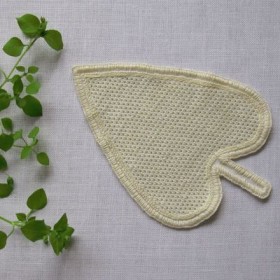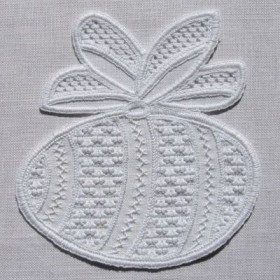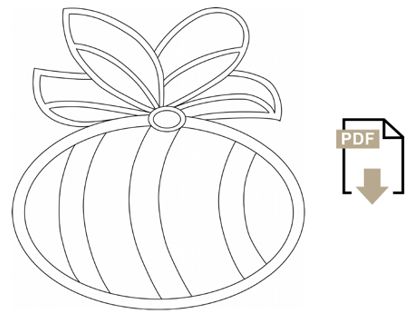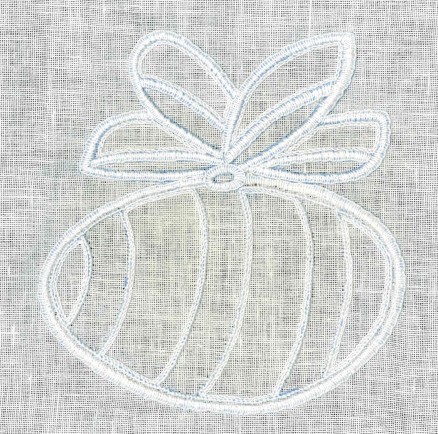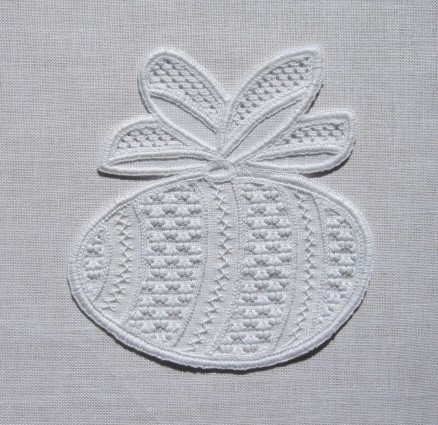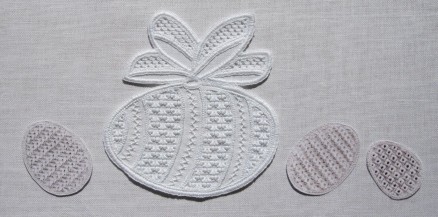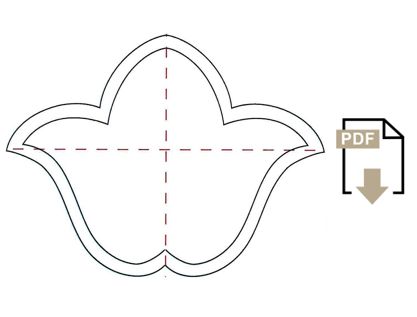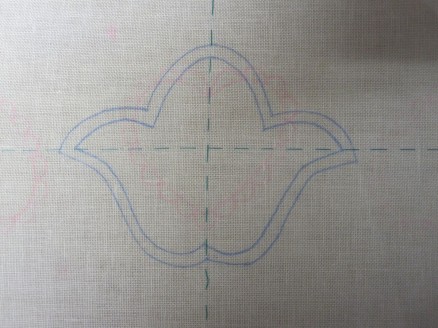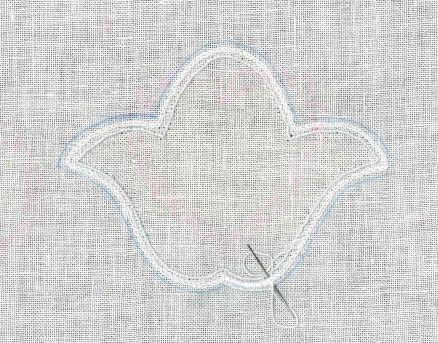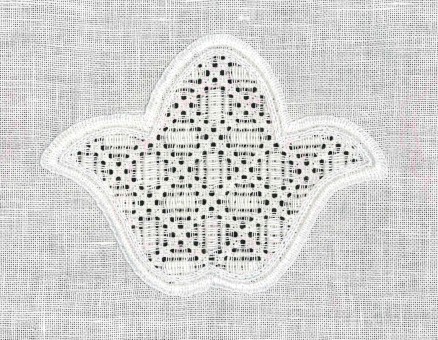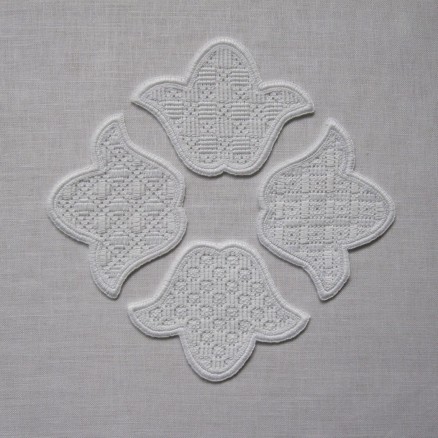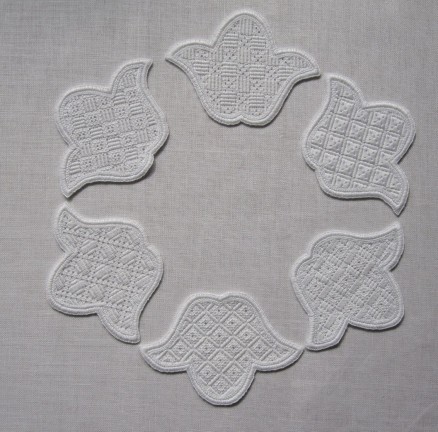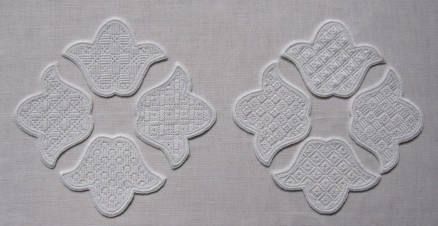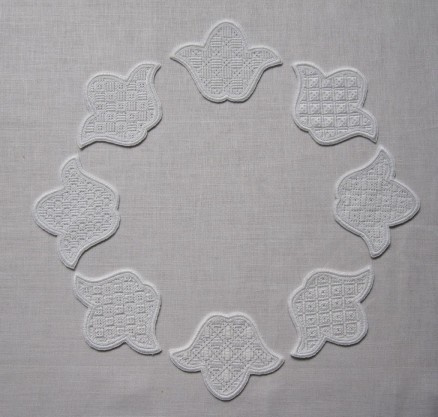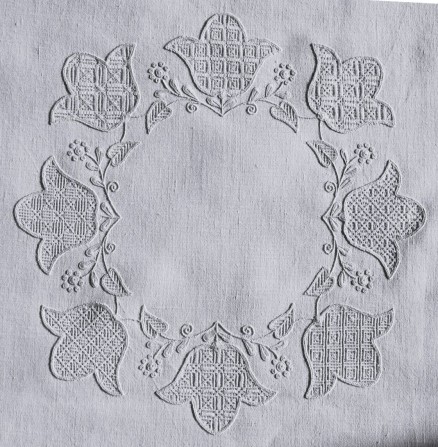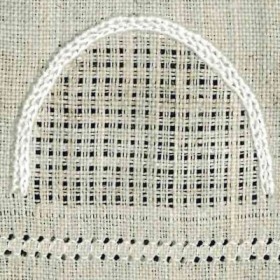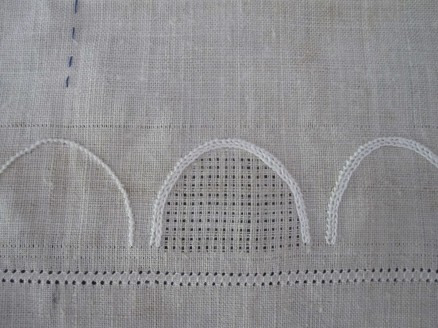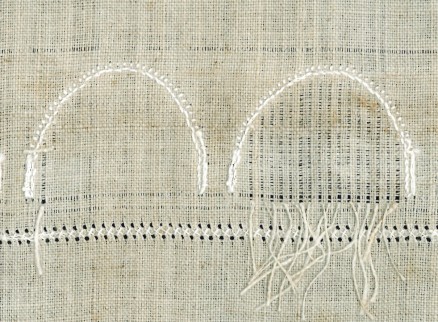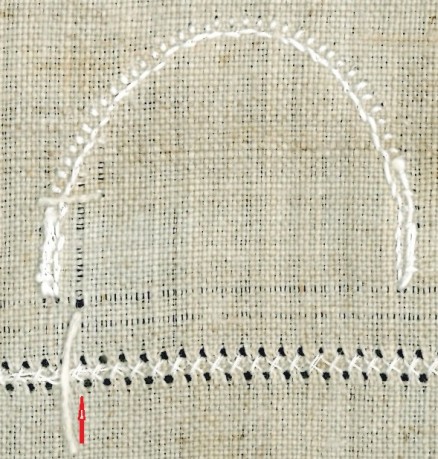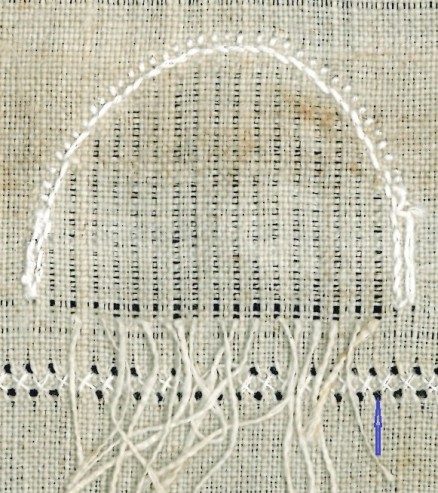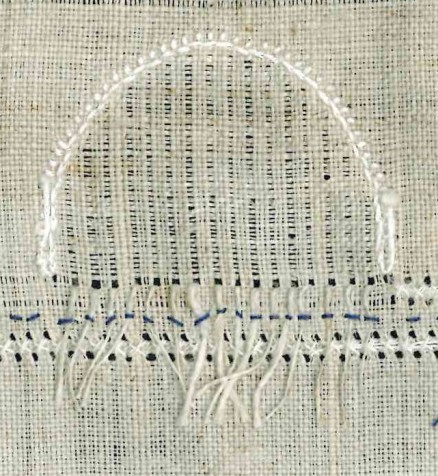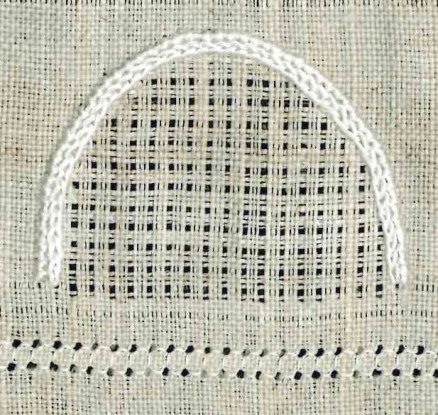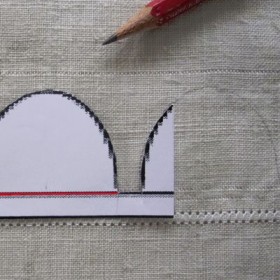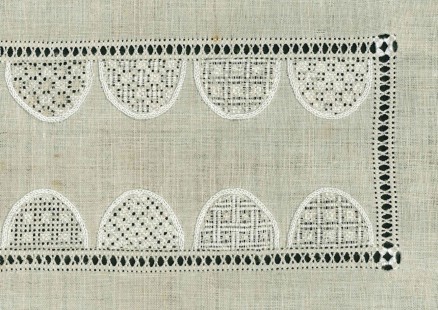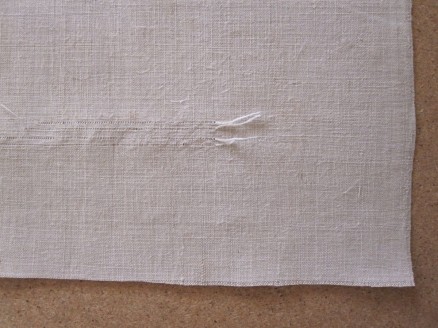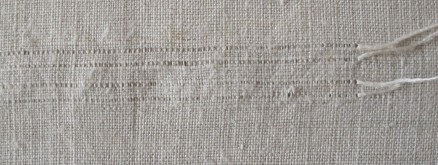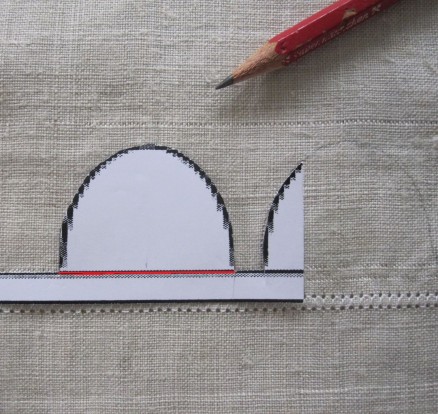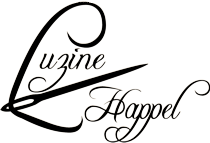„Der Mai ist gekommen, die Bäume schlagen aus…“ (-May is here, the trees bud)
this German folk song sings about the freshness and the catharic effect of the awakening nature.
Although the shoot took place earlier this year, so it’s usually in May, in which the first green leaves are visible on the trees. Therefore, I have chosen for this month a fresh “green” leaf.
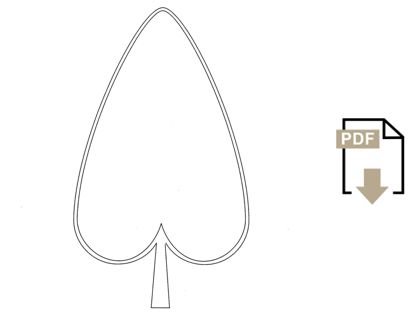
The original measures 10 cm wide and 17 cm in the high.
On Weddigen linen, 13.5/cm thread count, I used the following threads:
Coton à broder No. 16 for the Coral Knot stitches
Coton à broder No. 20 for the Chain stitches worked as underlay for the Blanket stiotches
Coton à broder No. 20 for the Blanket stitches
Coton à broder No. 30 for the Chain stitches worked around all the areas to be filled with drawn thread patterns.
Coton à broder No. 25 for the filling pattern
As simple drawn thread pattern „Wave stitch“ was chosen (Basic Principles of Schwalm Whitework, pages 34-36), because of its even and unspectacular appearance.
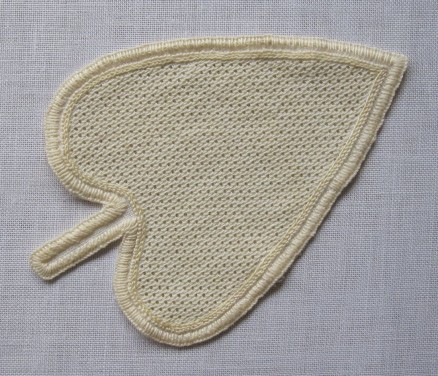
After finishing, the embroidered piece was washed (boiled), starched and ironed. Then, the Easter egg was cut. If needed, such closely trimmed embroidery can be washed and ironed – quick and easy – at any time, but never spun in a washing machine!
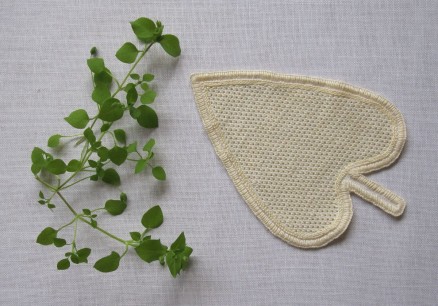
The soberly leaves are perfect alone, however one can combine them very well with flowers. This possibility I will show in August.
